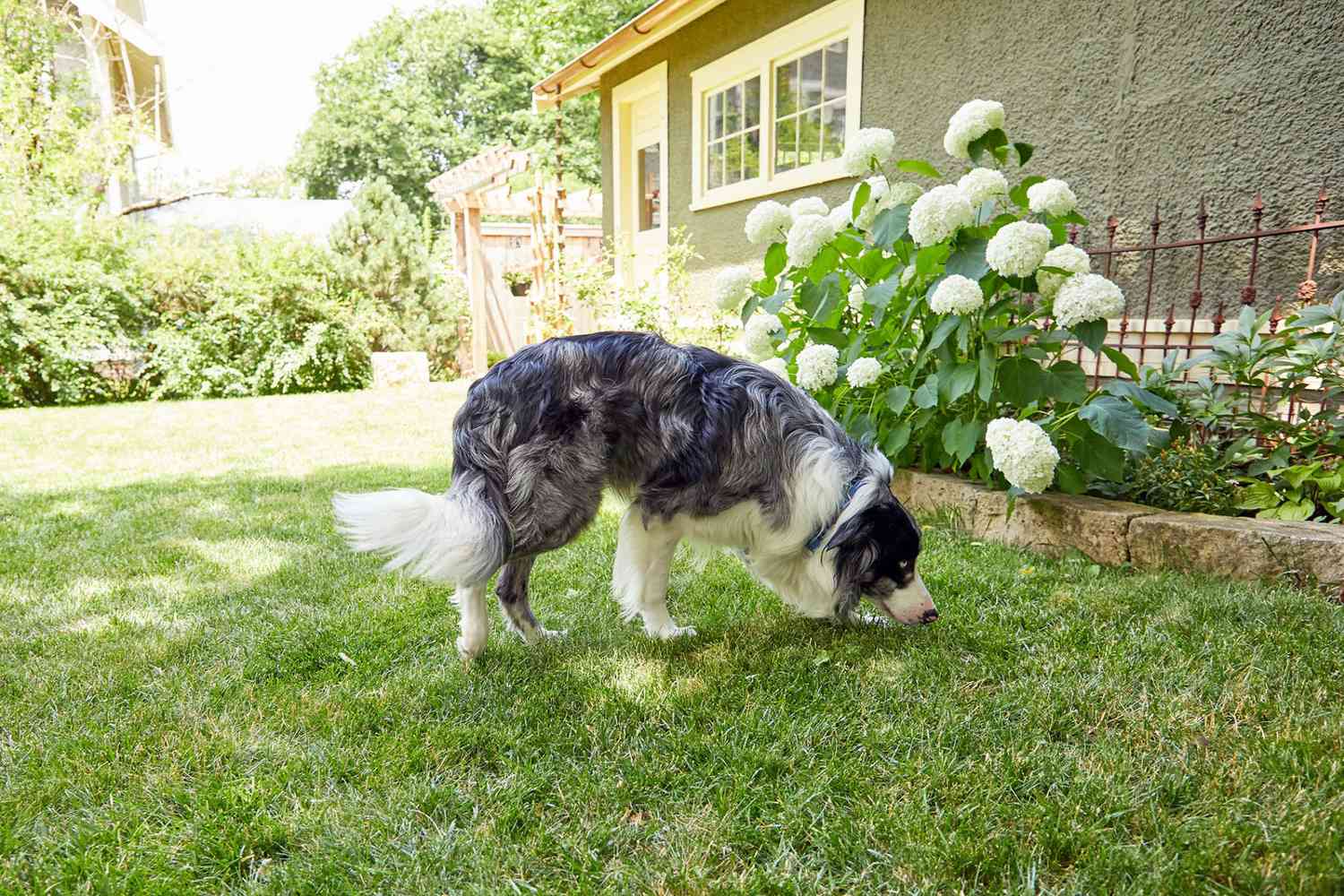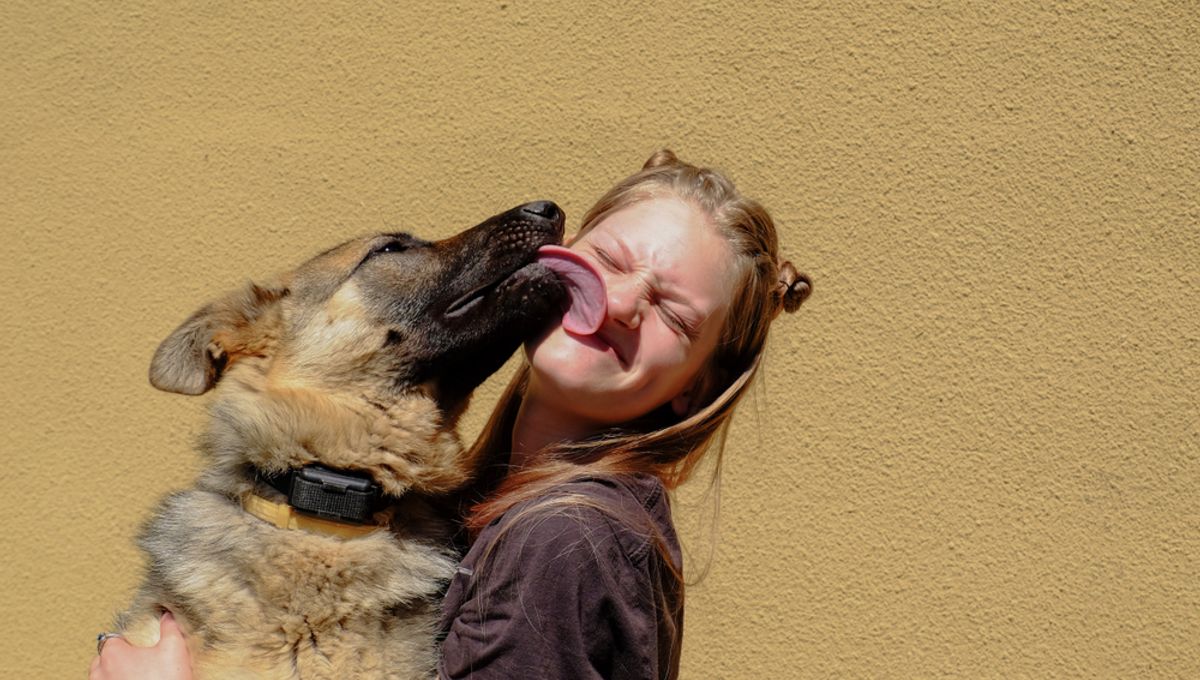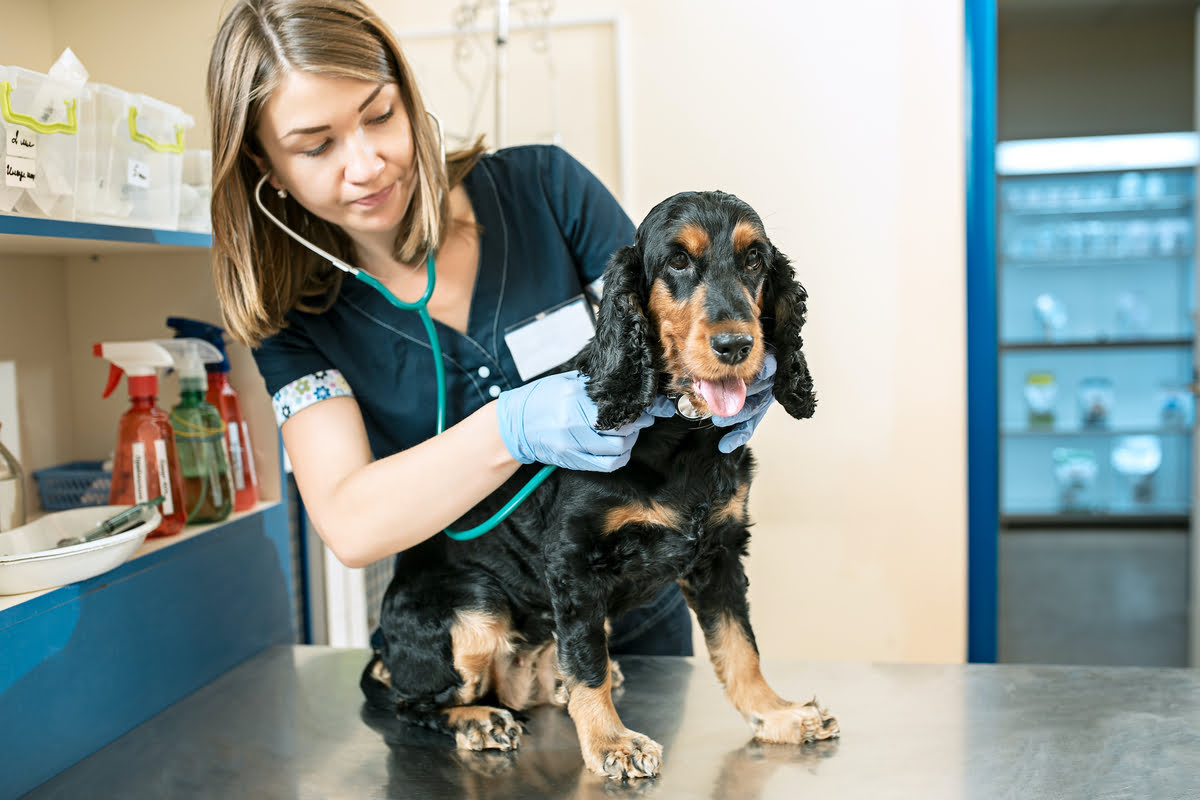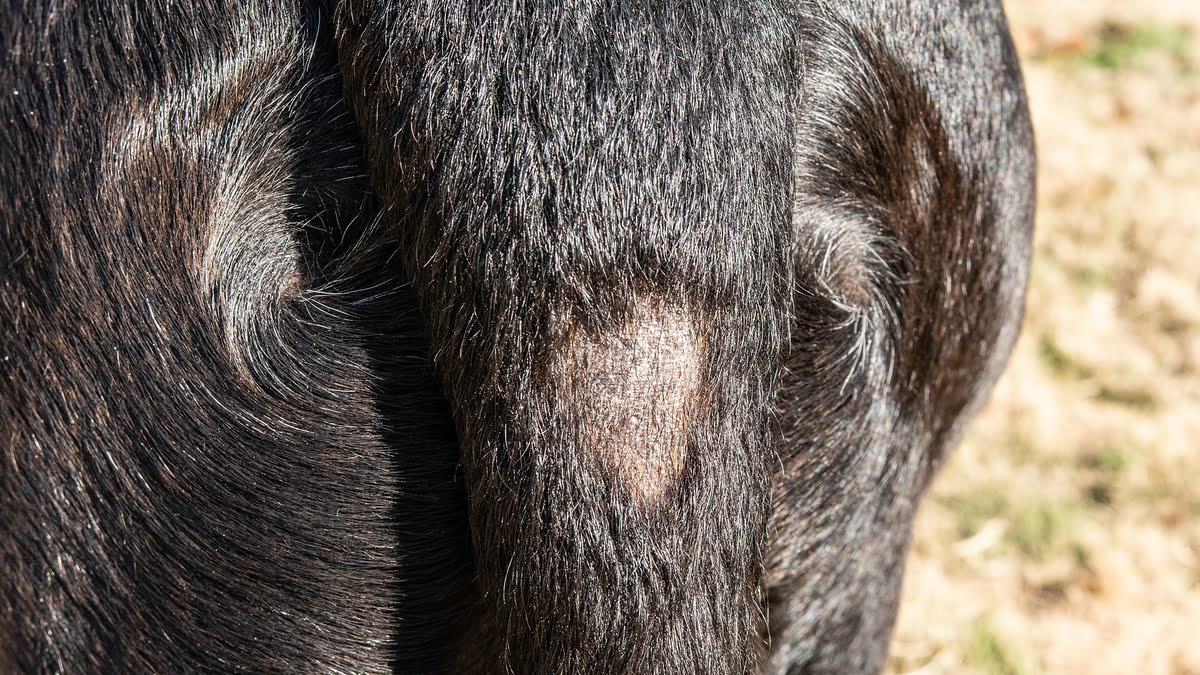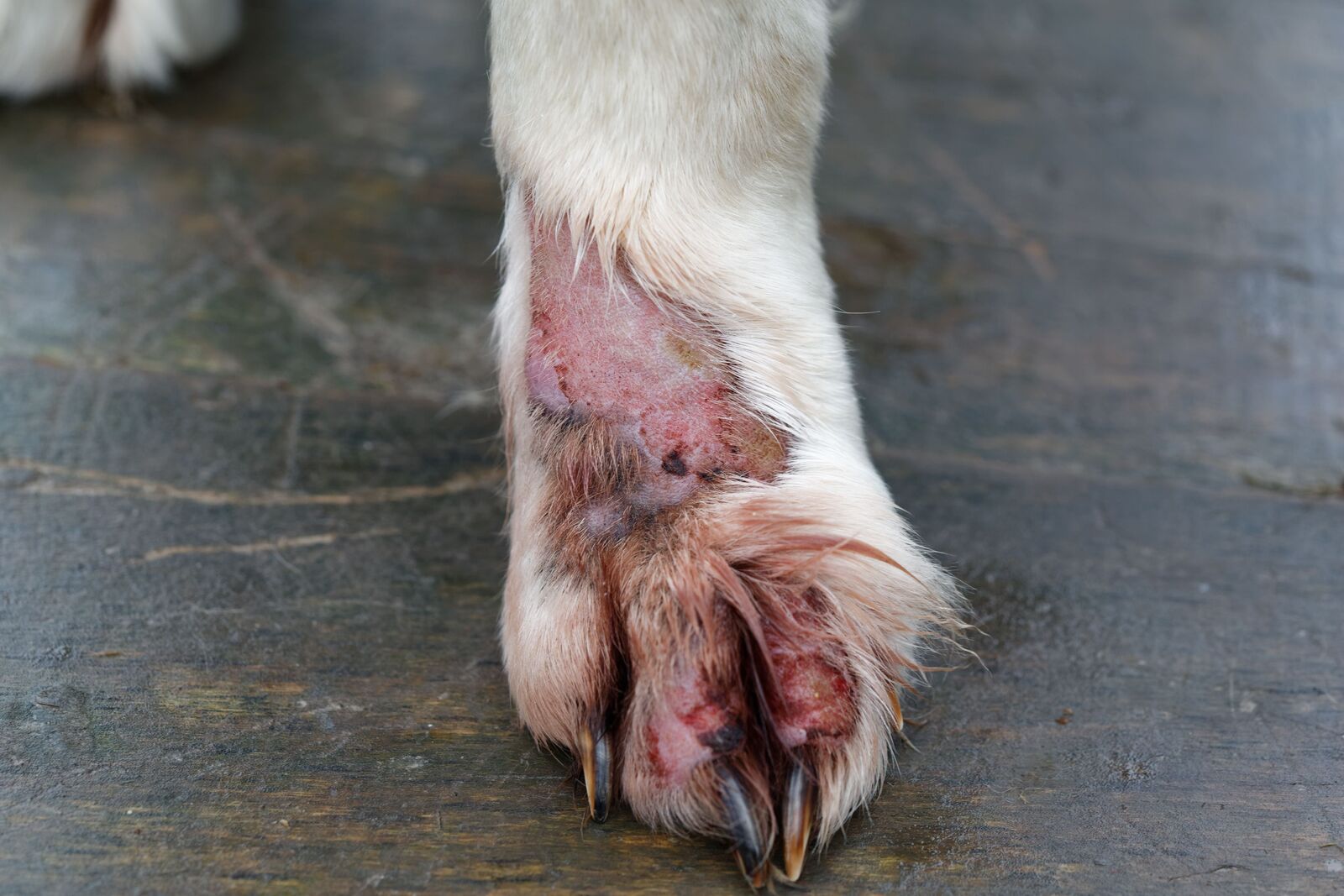Home>Health & Wellness>Common Health Issues>What Is Giardia Parasite In Dogs?


Common Health Issues
What Is Giardia Parasite In Dogs?
Published: February 7, 2024
Learn about common health issues in dogs, including the Giardia parasite. Understand the symptoms, treatment, and prevention to keep your pet healthy.
(Many of the links in this article redirect to a specific reviewed product. Your purchase of these products through affiliate links helps to generate commission for Pawsomeoldies.com, at no extra cost. Learn more)
Table of Contents
Introduction
Giardia parasite is a common health issue that affects dogs worldwide. This microscopic parasite, known as Giardia duodenalis, can cause gastrointestinal problems in dogs, leading to discomfort and potential health complications. Understanding the nature of Giardia infection is crucial for dog owners to recognize the symptoms, seek appropriate treatment, and take preventive measures to safeguard their furry companions' well-being.
Giardia infection is prevalent in environments where dogs have close contact with contaminated water sources, such as ponds, rivers, or puddles. Additionally, the parasite can spread through contact with infected feces, making it essential for dog owners to be vigilant about their pets' surroundings and hygiene practices.
By delving into the details of Giardia parasite in dogs, we can gain valuable insights into the symptoms, diagnosis, treatment, and preventive measures associated with this common health issue. This knowledge empowers dog owners to proactively address Giardia infection, ensuring the health and happiness of their beloved canine companions.
Read more: What Parasite Is Passed From Dog To Human
What is Giardia Parasite?
Giardia parasite, scientifically known as Giardia duodenalis, is a microscopic, single-celled organism that can cause gastrointestinal illness in dogs. This parasite is commonly found in the intestines of infected animals and can be shed through their feces, posing a risk of transmission to other animals, including dogs.
The life cycle of the Giardia parasite involves two stages: the cyst stage and the trophozoite stage. The cysts, which are the dormant and environmentally resistant form of the parasite, can survive in the environment for extended periods, making them a persistent threat to dogs. When a dog ingests these cysts, they can transform into the active trophozoites in the intestines, leading to an infection.
Giardia infection in dogs often occurs through the ingestion of contaminated water or food, as well as through close contact with infected animals. Additionally, environments with poor sanitation and hygiene, such as kennels or shelters with overcrowded conditions, can facilitate the spread of the parasite.
The symptoms of Giardia infection in dogs can vary, but commonly include diarrhea, vomiting, weight loss, and lethargy. It's important to note that some infected dogs may not display any visible symptoms, yet they can still act as carriers, shedding the parasite and potentially infecting other animals.
Understanding the nature of the Giardia parasite is crucial for dog owners to recognize the potential risks and take proactive measures to protect their pets. By being aware of the sources of contamination and the modes of transmission, dog owners can implement strategies to minimize the likelihood of Giardia infection in their canine companions.
Symptoms of Giardia Infection in Dogs
Giardia infection in dogs can manifest in various ways, impacting their overall well-being and causing discomfort. It's essential for dog owners to be vigilant and recognize the potential symptoms of Giardia infection to promptly address the issue and seek appropriate veterinary care.
-
Gastrointestinal Distress: Dogs with Giardia infection often experience gastrointestinal issues, such as diarrhea, which may range from mild to severe. The stool may appear soft, greasy, and have a particularly foul odor. In some cases, the diarrhea may contain mucus or blood, indicating a more severe infection. Additionally, affected dogs may exhibit increased frequency of bowel movements, straining during defecation, and signs of abdominal discomfort.
-
Vomiting: Giardia infection can lead to episodes of vomiting in dogs. This symptom can contribute to dehydration and further discomfort for the affected animal. Persistent or severe vomiting should prompt immediate veterinary attention to prevent complications associated with fluid and nutrient loss.
-
Weight Loss: Unintentional weight loss is a common consequence of Giardia infection in dogs. The combination of gastrointestinal disturbances, reduced appetite, and nutrient malabsorption can lead to a noticeable decline in the dog's body weight over time. Monitoring changes in the dog's weight can provide valuable insights into its overall health status.
-
Lethargy and Weakness: Dogs suffering from Giardia infection may display signs of lethargy, appearing unusually tired or lacking energy. This can manifest as reluctance to engage in physical activities, reduced interest in play, and prolonged periods of rest. Weakness and a general sense of malaise may also accompany this symptom.
-
Poor Coat Condition: In some cases, dogs with Giardia infection may exhibit changes in their coat condition, appearing unkempt or dull. This can be attributed to the impact of the infection on the dog's overall health and nutritional status.
It's important to note that the severity and combination of symptoms can vary among individual dogs. Additionally, some infected dogs may not display any visible signs of illness, making it crucial for dog owners to remain attentive to any changes in their pet's behavior, appetite, and overall well-being.
By recognizing the potential symptoms of Giardia infection in dogs, pet owners can take proactive measures to seek veterinary care, facilitate appropriate diagnostic testing, and initiate targeted treatment to alleviate the discomfort and health risks associated with this common parasitic infection.
Diagnosing Giardia in Dogs
Diagnosing Giardia infection in dogs involves a comprehensive approach to confirm the presence of the parasite and assess the extent of the infection. Veterinary professionals employ various diagnostic methods to accurately identify Giardia in dogs, enabling targeted treatment and effective management of the condition.
Fecal Testing
One of the primary methods for diagnosing Giardia in dogs is through fecal testing. Veterinarians may perform a fecal flotation test or utilize specialized diagnostic techniques, such as the centrifugal fecal flotation, to detect the presence of Giardia cysts in the dog's stool. These tests involve examining a fecal sample under a microscope to identify the characteristic cysts of the parasite. Additionally, veterinarians may utilize immunofluorescent assays or enzyme-linked immunosorbent assays (ELISAs) for enhanced sensitivity in detecting Giardia antigens in the fecal sample.
Read more: What Parasite Is Found In Dog Feces
Clinical Evaluation
In addition to fecal testing, veterinary professionals conduct a thorough clinical evaluation of the dog to assess its overall health and identify potential symptoms associated with Giardia infection. This comprehensive assessment may involve reviewing the dog's medical history, conducting a physical examination, and evaluating any gastrointestinal symptoms, such as diarrhea, vomiting, and weight loss. By correlating the clinical findings with the diagnostic test results, veterinarians can establish a definitive diagnosis of Giardia infection in dogs.
Repeat Testing
Due to the intermittent shedding of Giardia cysts in infected dogs, repeat fecal testing may be necessary to confirm the presence of the parasite. Veterinarians may recommend multiple fecal examinations over a specified period to increase the likelihood of detecting Giardia and accurately assessing the dog's infection status. This approach helps mitigate the potential for false-negative results and ensures a thorough diagnostic process for identifying Giardia in dogs.
Diagnostic Considerations
It's important to consider the potential limitations of diagnostic testing for Giardia in dogs. The intermittent shedding of cysts and the variability in cyst excretion among infected dogs can pose challenges in obtaining definitive diagnostic results. Additionally, the presence of concurrent gastrointestinal conditions or parasitic infections may complicate the diagnostic process, necessitating a comprehensive approach to differentiate and address multiple health issues affecting the dog.
By employing a multifaceted approach encompassing fecal testing, clinical evaluation, and repeat testing, veterinary professionals can effectively diagnose Giardia infection in dogs. This comprehensive diagnostic process enables timely intervention and targeted treatment, ultimately promoting the health and well-being of dogs affected by this common parasitic infection.
Treatment for Giardia Infection in Dogs
The treatment for Giardia infection in dogs typically involves a multifaceted approach aimed at eliminating the parasite, alleviating gastrointestinal symptoms, and preventing the spread of the infection. Veterinary professionals employ specific medications and supportive care measures to address Giardia in dogs effectively.
Read more: What Is Blood Parasite Test For Dogs
Medications
Veterinarians commonly prescribe antiparasitic medications to target and eliminate Giardia in infected dogs. Metronidazole and fenbendazole are among the most frequently utilized drugs for treating Giardia infection. These medications work to disrupt the growth and reproduction of the parasite, ultimately leading to its eradication from the dog's gastrointestinal tract. The treatment duration and dosage of these medications are determined based on the severity of the infection and the individual dog's health status. It's essential for dog owners to adhere to the prescribed treatment regimen and follow the veterinarian's instructions to ensure the effectiveness of the medications.
Symptomatic Management
In addition to antiparasitic medications, symptomatic management plays a crucial role in supporting dogs affected by Giardia infection. Gastrointestinal symptoms, such as diarrhea and vomiting, may necessitate supportive care to alleviate discomfort and promote recovery. This may involve dietary modifications, such as easily digestible food options, to minimize gastrointestinal distress and facilitate nutrient absorption. Ensuring adequate hydration is also essential, especially in cases where diarrhea and vomiting contribute to fluid loss. Veterinary guidance on dietary recommendations and hydration strategies can significantly aid in managing the dog's symptoms during the treatment period.
Environmental Decontamination
To prevent re-infection and minimize the risk of spreading Giardia to other animals, thorough environmental decontamination is crucial. Cleaning and disinfecting the dog's living environment, including bedding, crates, and any areas the dog frequents, can help eliminate residual cysts and reduce the likelihood of environmental contamination. Additionally, practicing proper hygiene measures, such as promptly removing and disposing of feces, is essential to limit the spread of the parasite and safeguard the overall well-being of the dog and other pets in the household.
Follow-Up Monitoring
After initiating treatment for Giardia infection, follow-up monitoring and re-evaluation by the veterinarian are essential to assess the dog's response to the medications and overall recovery progress. This may involve repeat fecal testing to confirm the elimination of the parasite and ensure the dog's gastrointestinal health has been restored. By closely monitoring the dog's condition post-treatment, veterinary professionals can provide tailored guidance and adjustments to the treatment plan as needed, ultimately promoting the dog's full recovery from Giardia infection.
By implementing a comprehensive treatment approach encompassing antiparasitic medications, symptomatic management, environmental decontamination, and follow-up monitoring, veterinary professionals can effectively address Giardia infection in dogs. This proactive and holistic treatment strategy aims to eliminate the parasite, alleviate symptoms, and prevent recurrence, ultimately restoring the health and well-being of dogs affected by this common parasitic infection.
Preventing Giardia Infection in Dogs
Preventing Giardia infection in dogs involves proactive measures to minimize the risk of exposure to the parasite and safeguard the overall health of canine companions. By implementing targeted strategies and adhering to essential guidelines, dog owners can significantly reduce the likelihood of Giardia infection in their pets.
Hygiene and Sanitation
Maintaining a clean and hygienic living environment for dogs is paramount in preventing Giardia infection. Regularly cleaning and disinfecting areas where dogs spend time, including living spaces, bedding, and toys, helps minimize the presence of infectious cysts. Prompt removal and proper disposal of feces, both indoors and outdoors, are essential to prevent environmental contamination and reduce the risk of transmission.
Water Source Management
Given that contaminated water is a common vehicle for Giardia transmission, dog owners should exercise caution regarding the water sources accessible to their pets. Avoiding stagnant or untreated water bodies, such as ponds and puddles, can help mitigate the risk of dogs ingesting water containing Giardia cysts. Providing clean and safe drinking water for dogs, especially during outdoor activities, is crucial in preventing waterborne transmission of the parasite.
Preventing Contact with Infected Animals
Limiting direct contact with potentially infected animals, particularly those exhibiting gastrointestinal symptoms, can aid in preventing the spread of Giardia. When socializing or interacting with other dogs, being mindful of their health status and practicing responsible pet ownership by avoiding contact with known or suspected carriers of the parasite can reduce the risk of transmission.
Read more: What Does A Parasite In A Dog Look Like
Veterinary Guidance and Preventive Care
Seeking regular veterinary care and adhering to preventive healthcare measures, including routine fecal testing and parasite control protocols, can contribute to the prevention of Giardia infection in dogs. Veterinarians can provide tailored guidance on parasite prevention, recommend appropriate preventive medications, and facilitate comprehensive wellness strategies to support the overall health and resilience of dogs against parasitic threats.
Education and Awareness
Educating oneself about the nature of Giardia infection and raising awareness among fellow dog owners can foster a community-oriented approach to preventing the spread of the parasite. Sharing knowledge about the potential sources of contamination, the importance of hygiene practices, and the significance of preventive healthcare empowers dog owners to collectively mitigate the risk of Giardia infection in their local pet communities.
By integrating these preventive measures into their daily routines and pet care practices, dog owners can effectively reduce the risk of Giardia infection in their beloved canine companions. Proactive prevention not only safeguards the health and well-being of individual dogs but also contributes to the broader effort of promoting a healthier and safer environment for all pets.
Conclusion
In conclusion, Giardia parasite poses a significant health concern for dogs, necessitating a comprehensive understanding of its nature, symptoms, diagnosis, treatment, and preventive measures. The microscopic nature of the Giardia parasite, its resilience in the environment, and the potential for asymptomatic carriers highlight the complexity of addressing this common health issue in dogs.
Recognizing the symptoms of Giardia infection, such as gastrointestinal distress, vomiting, weight loss, lethargy, and poor coat condition, empowers dog owners to promptly seek veterinary care and facilitate targeted diagnostic testing. Through fecal examinations, clinical evaluations, and repeat testing, veterinarians can accurately diagnose Giardia in dogs, enabling timely intervention and tailored treatment strategies.
The multifaceted approach to treating Giardia infection involves the administration of antiparasitic medications, symptomatic management, environmental decontamination, and follow-up monitoring. By addressing the parasite, alleviating symptoms, and preventing re-infection, veterinary professionals strive to restore the health and well-being of dogs affected by Giardia.
Furthermore, proactive prevention measures, including hygiene and sanitation practices, water source management, limiting contact with infected animals, and seeking veterinary guidance, play a pivotal role in mitigating the risk of Giardia infection in dogs. Educating dog owners about the importance of preventive care and fostering awareness within pet communities contributes to a collective effort in preventing the spread of the parasite.
Ultimately, the well-being of dogs is intricately linked to the proactive involvement of pet owners, the expertise of veterinary professionals, and the collaborative commitment to maintaining a healthy and safe environment for all pets. By prioritizing preventive measures, prompt intervention, and holistic care, dog owners can effectively safeguard their beloved companions from the impact of Giardia infection, promoting a fulfilling and vibrant life for their canine friends.
